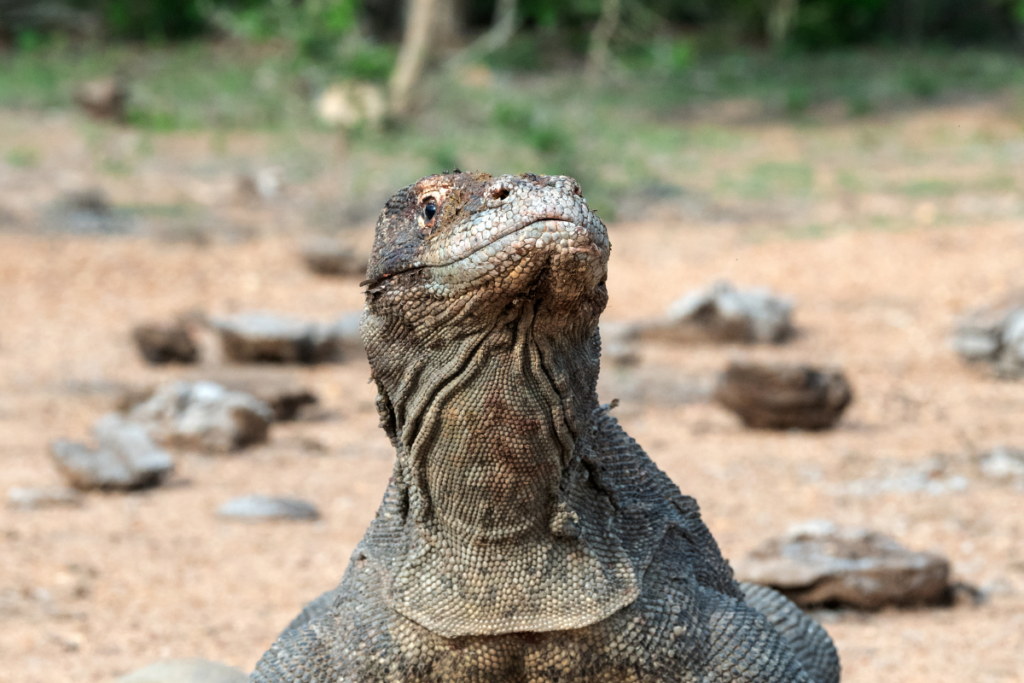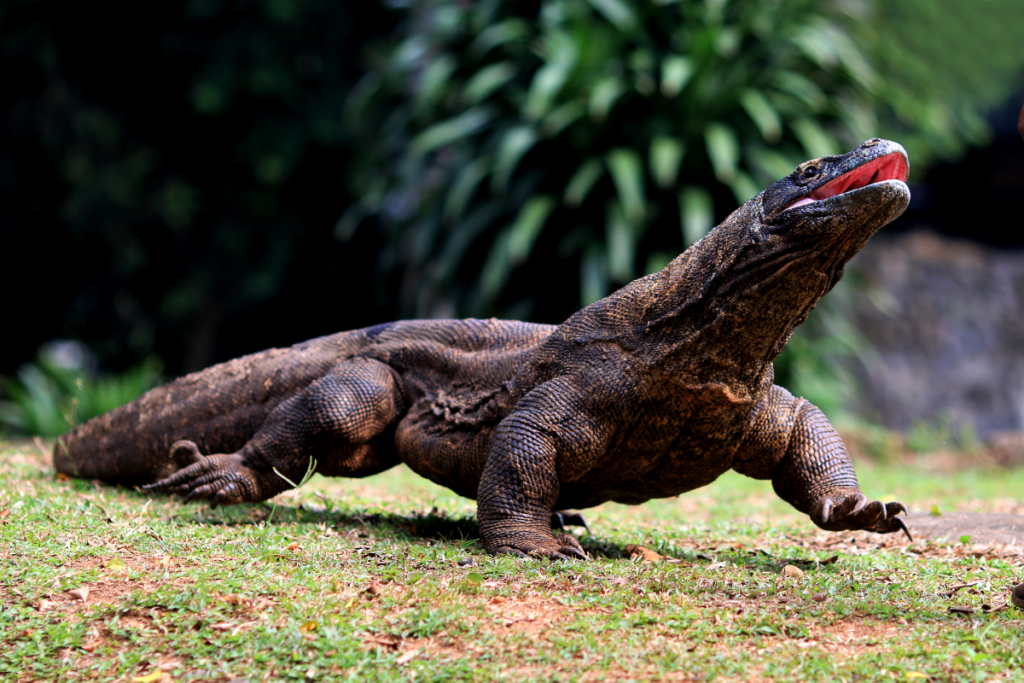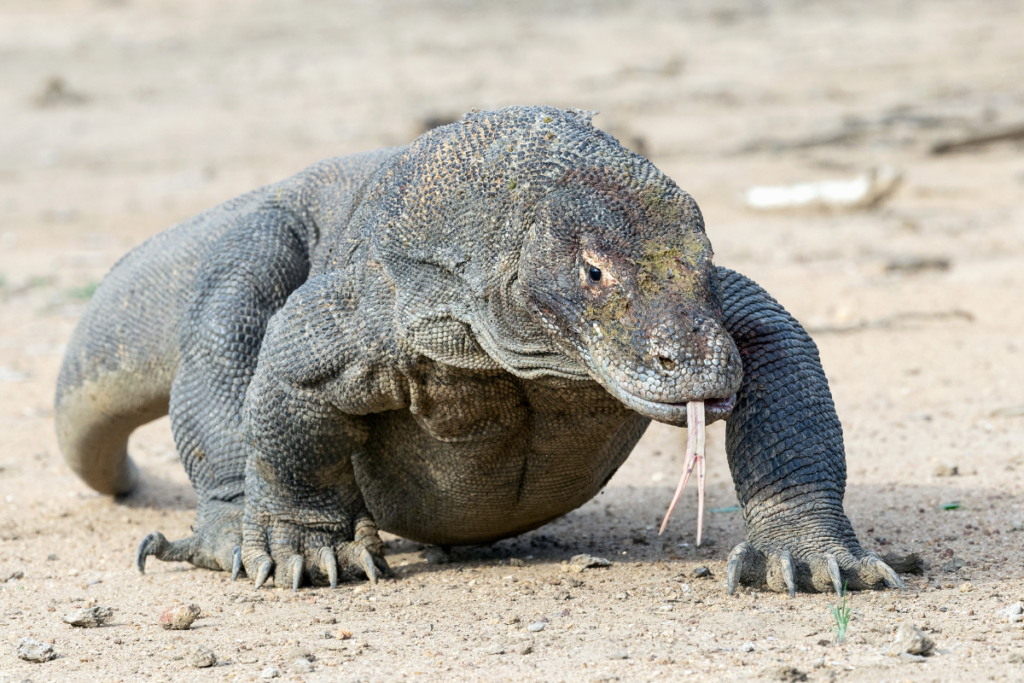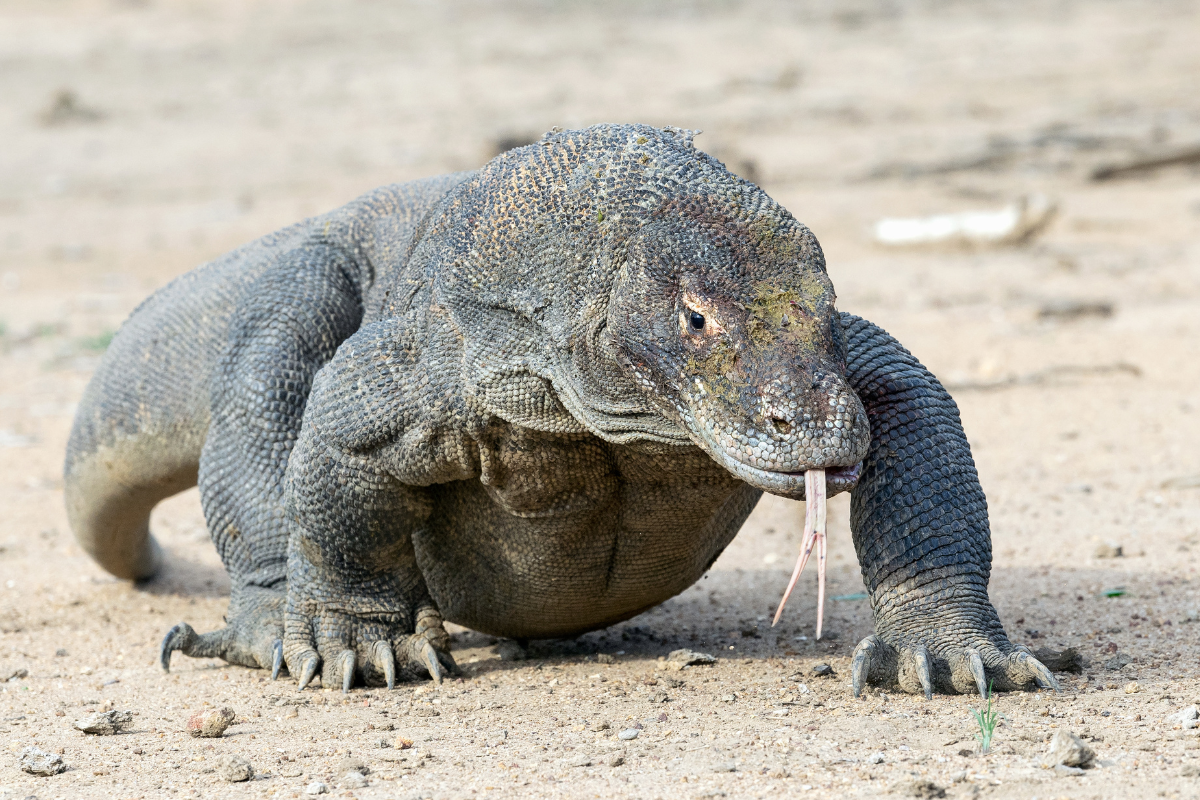The Komodo dragon, Varanus komodoensis, is a remarkable reptile known for its impressive size, predatory prowess, and unique habitat.
Found primarily in the Indonesian islands of Komodo, Rinca, Flores, Gili Motang, and Padar, these ancient creatures are the largest lizards in the world.
Here, we delve into the fascinating world of the Komodo dragon, exploring its physical characteristics, diet, habitat, behavior, and conservation status.
Physical Characteristics

Komodo dragons are formidable creatures, with males typically growing to lengths of 8 to 9 feet (2.4 to 2.7 meters) and weighing between 150 to 200 pounds (68 to 91 kilograms).
Females are usually smaller, averaging around 6 to 7 feet (1.8 to 2.1 meters) in length and weighing about 150 pounds (68 kilograms).
These lizards possess muscular bodies, long tails, strong limbs with sharp claws, and a distinctive elongated head equipped with serrated teeth.
Their skin is reinforced with armored scales, providing protection from injuries and bites during confrontations with prey or other dragons.
Komodo dragons exhibit a range of colors, including gray, green, brown, and black, helping them blend into their natural surroundings of savannas, forests, and volcanic hillsides.
Diet

Komodo dragons are apex predators, consuming a diverse diet that includes both carrion and live prey.
They are known to hunt deer, wild boar, water buffalo, and even smaller Komodo dragons.
Their hunting strategy often involves ambush tactics, where they lie in wait for unsuspecting prey to approach closely before launching a sudden, powerful attack.
Despite their sluggish appearance, Komodo dragons can move quickly when hunting or defending their territory.
Their acute sense of smell, aided by a forked tongue used to detect chemical particles in the air, helps them locate carrion from several kilometers away.
Habitat

These formidable reptiles primarily inhabit the tropical savannas and forests of Komodo Island and neighboring islands in Indonesia’s Lesser Sunda Islands.
They prefer areas with dry, open grasslands, dense forests, and scrublands, where they can find suitable prey and nesting sites.
Komodo dragons are also known to occupy elevations up to 2,000 meters (6,500 feet) above sea level, showcasing their adaptability to varied terrain and climate conditions.
The volcanic origin of their habitats provides thermal benefits, allowing Komodo dragons to regulate their body temperature by basking in the sun or retreating to cooler, shaded areas as needed.
Despite their ability to thrive in these rugged environments, habitat loss due to human activities poses a significant threat to their long-term survival.
Behavior
Komodo dragons are solitary creatures for most of their lives, with adults typically occupying and defending large territories from other dragons.
Male dragons are especially territorial, engaging in aggressive displays to assert dominance and secure access to females during the mating season, which occurs between May and August.
Breeding usually takes place from July to September, with females laying their eggs in burrows dug into the ground.
The incubation period lasts approximately seven to eight months, after which the young hatch and must fend for themselves from the moment they emerge.
Conservation Status
The conservation status of Komodo dragons is classified as vulnerable by the International Union for Conservation of Nature (IUCN).
Threats to their survival include habitat destruction, poaching, and human encroachment on their natural habitats.
Conservation efforts, such as the establishment of protected areas and breeding programs, are crucial for safeguarding these iconic reptiles and preserving their unique ecological role in their native ecosystems.
In conclusion, the Komodo dragon stands as a testament to the marvels of evolution and the intricate balance of nature.
As apex predators, they play a vital role in regulating prey populations and maintaining the health of their ecosystems.
Continued conservation efforts and public awareness are essential to ensure the survival of these extraordinary creatures for generations to come.
I hope you find this article informative and comprehensive! Let me know if there’s anything else you’d like to add or adjust.






Leave a Reply